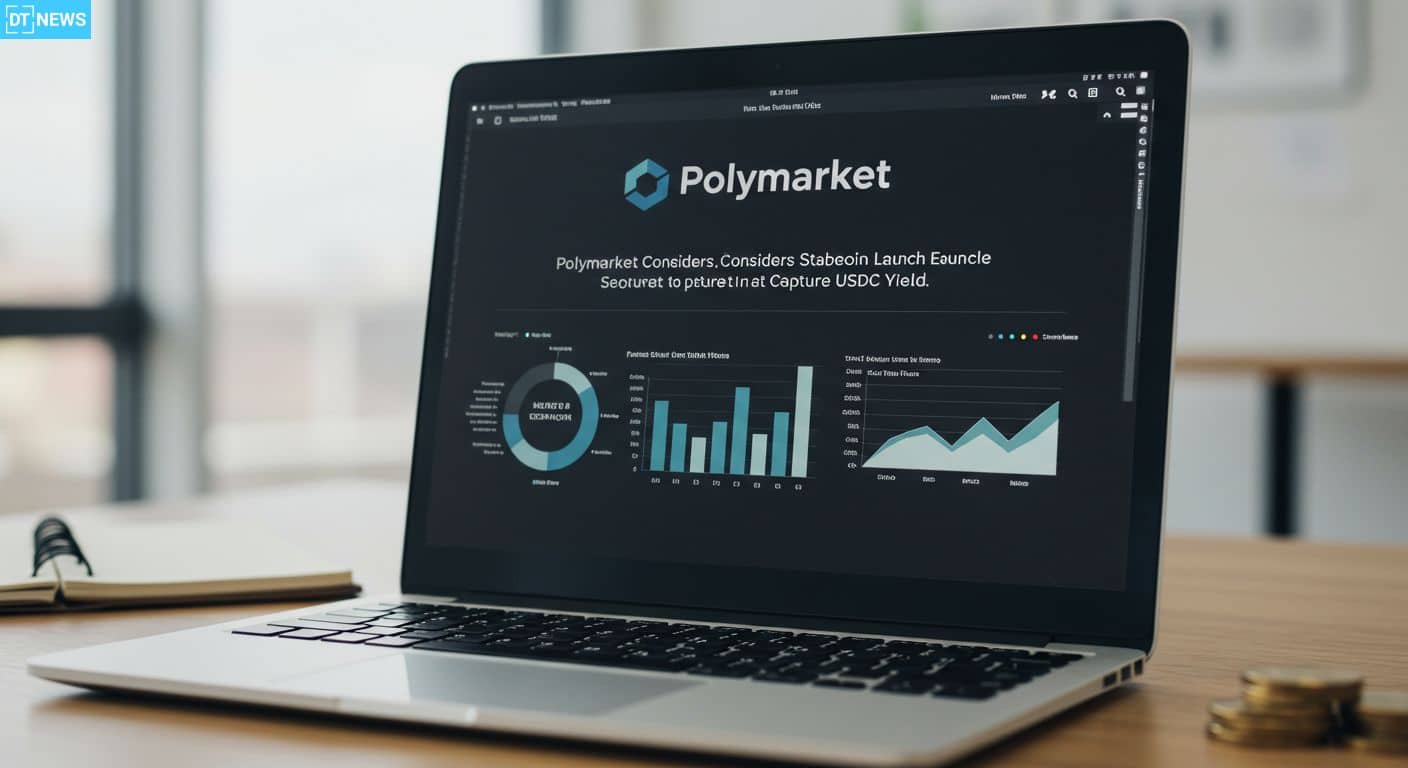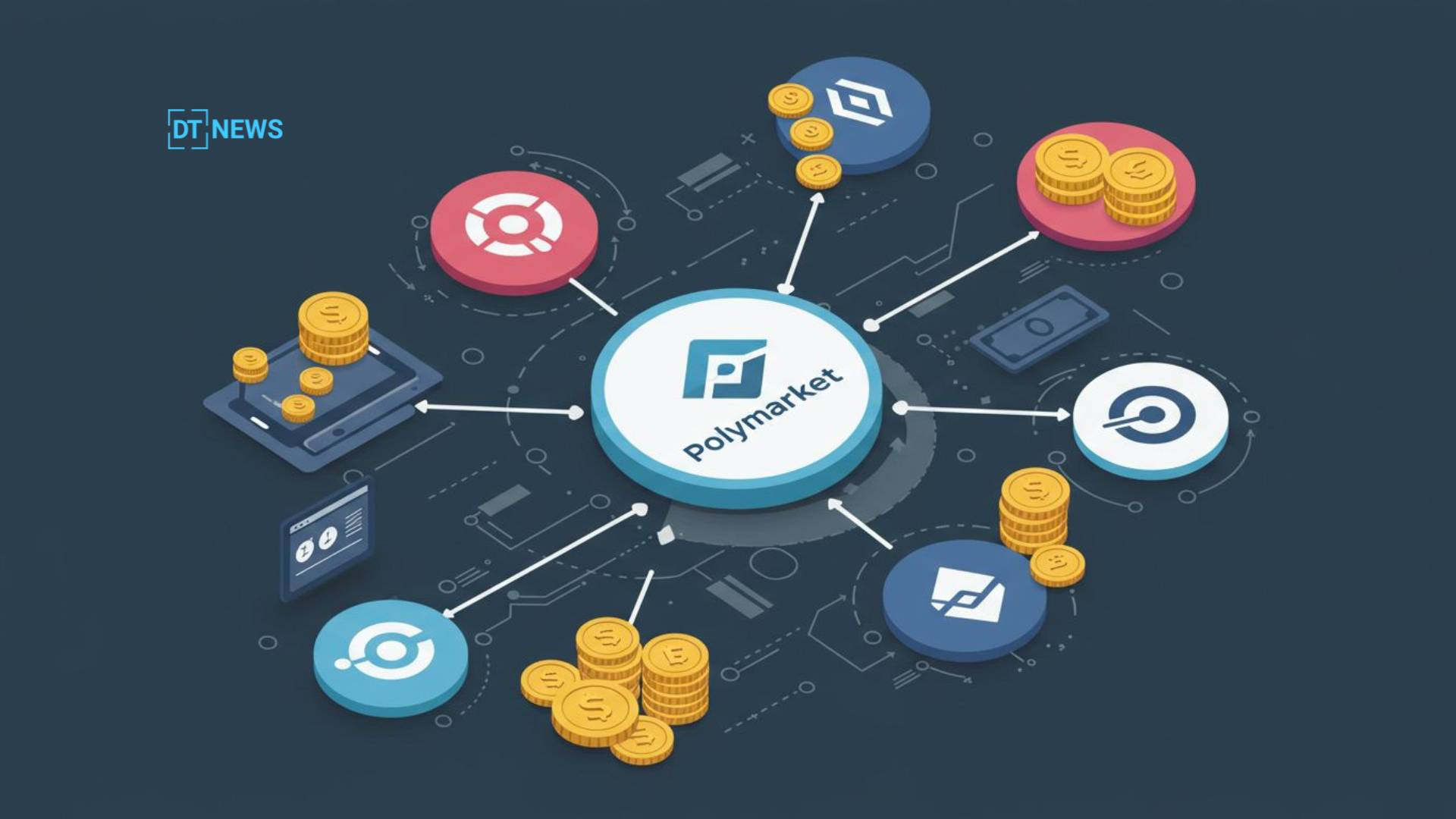According to sources, Polymarket is reportedly considering launching its own Polymarket stablecoin to internalize the yield from the USDC reserves backing bets on its platform. If this happens, it would be an incredible achievement for the billion-dollar crypto startup, allowing it to control the basic economics of stablecoin flows within its ecosystem rather than relying on third-party issuers like Circle.
- Yield Ownership
- Regulatory Timing Favors Innovation
- USDC Dependency and Circle’s Response
- Platform Scale and Market Opportunity
- Conclusion
- FAQs
- What is Polymarket?
- Why might Polymarket launch a stablecoin?
- Has Polymarket officially announced the stablecoin launch?
- How much volume does Polymarket see?
- Is Polymarket legal in the U.S.?
- Glossary
Yield Ownership
According to a source familiar with the discussions, Polymarket is believed to be exploring whether to launch a custom stablecoin or enter into a revenue-sharing agreement with Circle based on the volume of USDC used on its platform. The source said the main reason is to “own the yield-generating reserves” that currently benefit Circle.
In other words, Polymarket wants a piece of the profits from the billions of dollars in tokenized dollars flowing through its betting markets.
“Polymarket is locking a lot of stablecoin value in their betting pools and so they want some kind of mechanism to get the yield,” the person said.
Since users already transact in USDC or USDT within the platform, converting those assets into a proprietary token is considered a technically manageable task.

Regulatory Timing Favors Innovation
US stablecoin regulation developments seem to provide a level ground for this motion. Recently, the US Congress passed a long-awaited framework for stablecoins. While the details vary between federal and state requirements, the overall tone is pro-innovation, especially for platforms with closed ecosystems or niche use cases.
In that light, the new found interest in issuing Polymarket stablecoin fits the growing trend. The clarity has attracted more attention from fintech firms, centralized exchanges and crypto-native platforms. Tether and Circle have already made a killing from issuing stablecoins pegged to the US dollar and now other platforms are looking to replicate the model under new legal protections.
USDC Dependency and Circle’s Response
A lot of users bet with USDC, so a lot of reserves sit idle in the backend of the platform, earning returns that go to Circle. Those returns come from the short-term government securities Circle invests its reserves in.
Circle has reportedly been offering revenue-sharing agreements to keep their USDC integration. Polymarket has not disclosed if an offer has been made or rejected, but sources say issuing their own Polymarket stablecoin would allow them to capture more value internally without having to go through Circle’s terms.
“Launching a stablecoin is a complex task for most companies but for Polymarket, it’s relatively easy since the platform is self contained,” the source added.
Platform Scale and Market Opportunity
According to SimilarWeb, the site got 15.9 million visits in May 2025. During the previous election cycle, the platform reportedly handled over $8 billion in betting volume, making it one of the largest prediction markets in crypto.

The platform is also preparing to reenter the US market more formally after resolving its legal disputes with the Commodity Futures Trading Commission (CFTC). In 2022, Polymarket agreed to pay a civil penalty and cease operations for US-based users, but its recent acquisition of QCEX, a registered US-based exchange, shows its intention to resume operations in the US under a compliant framework.
Conclusion
Based on latest research, Polymarket stablecoin is still in discussion as the company weighs its options. Despite the internal discussions and growing speculation, Polymarket has not confirmed any decision on launching a stablecoin. Circle has also not commented and no formal talks between the two companies have been confirmed publicly.
As Circle is offering revenue-sharing deals to defend USDC’s market share, Polymarket will soon have to decide between continued reliance and full control of its stablecoin strategy.
Explore more about Stablecoins and how they work.
Summary
Polymarket is considering launching its own Polymarket stablecoin to capture yield from the USDC reserves used on its prediction market platform. With regulatory clarity in the U.S. and Circle offering revenue-sharing deals to retain partnerships, Polymarket sees an opportunity to issue a native token to internalize earnings.
FAQs
What is Polymarket?
Polymarket is a decentralized prediction market where users can bet on real-world events using stablecoins like USDC.
Why might Polymarket launch a stablecoin?
To capture the yield from the reserves backing USDC currently used on its platform, not rely on 3rd party stablecoin providers.
Has Polymarket officially announced the stablecoin launch?
No, a rep confirmed no decision has been made but it’s being considered.
How much volume does Polymarket see?
$8B in bets during the 2024 U.S. election cycle and 16M visitors in May 2025.
Is Polymarket legal in the U.S.?
Polymarket is reentering the U.S. market via its acquisition of QCEX after resolving previous legal issues.
Glossary
Stablecoin: a type of cryptocurrency pegged to the value of a fiat currency, usually the U.S. dollar.
USDC: U.S. dollar-pegged stablecoin issued by Circle, widely used in crypto.
Yield-generating reserves: assets like U.S. Treasury bills that earn interest; backing stablecoins and generating income for issuers.
Closed-loop ecosystem: system where assets circulate only within a single platform or networ;, minimizing external dependencies.
Revenue-sharing deal: an agreement where a platform shares in the income generated by another company’s product or service.
Sources



















































































































